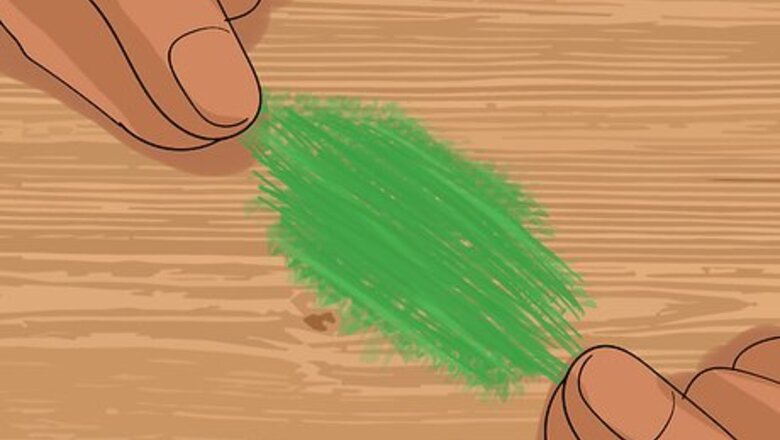
views
Making a Felt Sheet
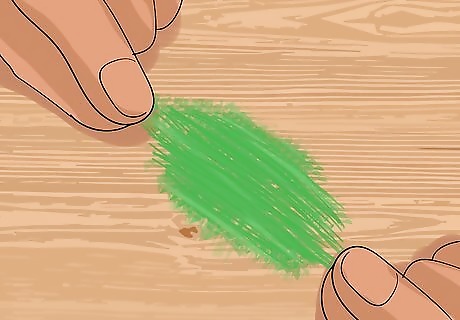
Use your fingers to pull apart some wool into tufts. Do not cut the wool into tufts. This will create sharp edges and make it difficult to felt. Also, be sure to get pure wool and not acrylic; acrylic fibers will not felt. Many crafters will recommend Merino wool for its fine fibers. The wool does not have to be naturally colored! Consider getting some dyed wool!
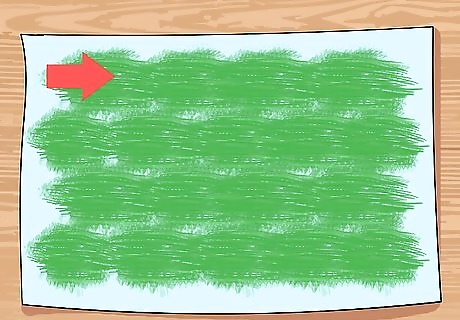
Lay the tufts out on a baking sheet, overlapping each row like scales on a fish. Make sure that the fibers are all going in the same direction. You do not have to cover the entire baking sheet; an 8 by 8 inch (20.32 by 20.32 centimeters) square will be plenty.
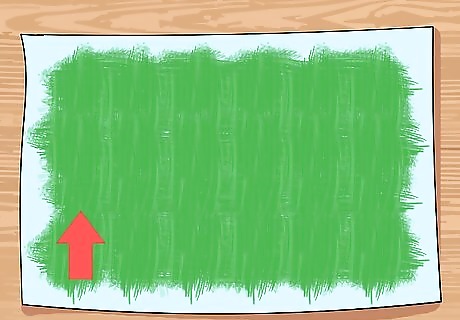
Lay out more tufts in a second layer with the fibers going perpendicular to the last one. For example, if all the tufts were going up-and-down in the first layer, make all the tufts go side-to-side in this layer. You can also experiment with using a different color of wool for this layer. Be sure to use a color that complements the first one, however, or you might get a muddy result.
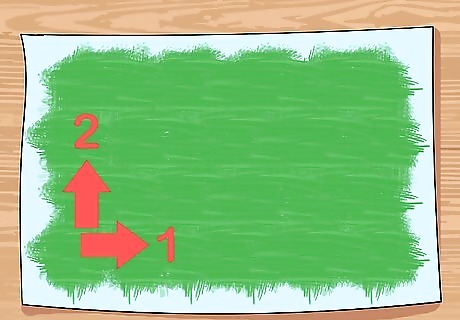
Repeat the first two layers, if desired, for a thicker felt sheet. Remember to alternate the direction in which the fibers are going with each layer. Two layers is perfectly fine for a thin piece of felt, but if you'd like something thicker, aim for three or four layers total. Consider adding some pieces of loose-weave fabric or bits of Merino yarn on top for color and texture.

Cover the layers with a piece of tulle or sheer polyester fabric. This will help keep the fibers in place during the felting process. The fabric needs to be big enough to cover the entire wool sheet.
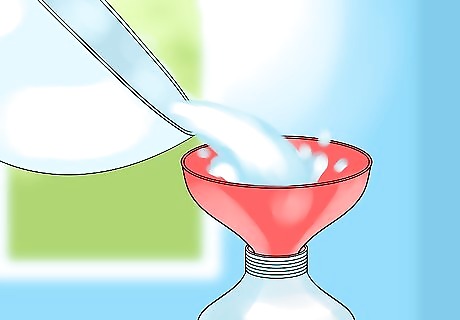
Make your felting solution and pour it into a spray bottle. Keep the rest of the felting solution handy to refill the bottle as needed. You will need 1 tablespoon of dish soap and 1 quart (950 milliliters) of hot water. Don't shake the bottle, or you will create too many suds. The hotter the water is, the faster the wool will felt. The water shouldn't be so hot that it is uncomfortable to work with, however.
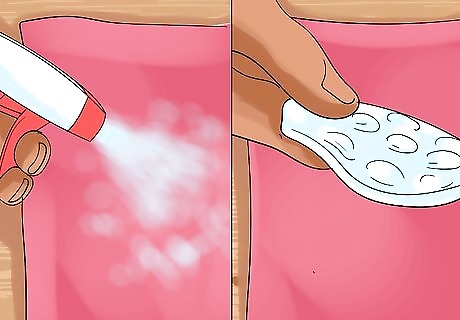
Spray the wool down, then gently massage it with a piece of soapy bubble wrap. Don't be tempted to pour the water onto the wool. This will cause the fibers to move around too much. Instead, spray it down with your hot, soapy water until it is completely saturated (but not dripping). Ball up some bubble wrap, rub it over a piece of bar soap, then gently massage the felt using small, circular motions. If you accidentally soaked the wool, use a small sponge to mop up the excess water.

Continue pressing on the wool until the fibers come together. Pour the water off as it cools, and spray more hot, soapy water onto it. Be sure to tuck in any loose or stray fibers as you work. This will make the edges of your sheet a little more even.
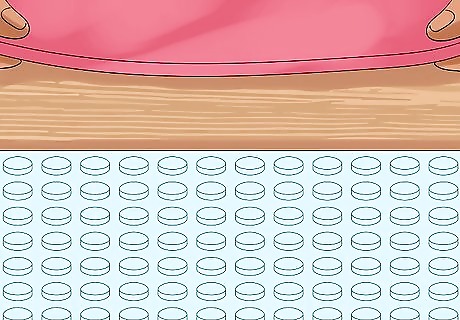
When the wool is ready, transfer it to a sheet of bubble wrap and peel off the tulle or polyester fabric. You can tell if the wool is ready by doing a simple pinch test. Pinch a piece of the wool between your thumb and forefinger. If it stays in place and doesn't come off, you can move on the to the next step. If it lifts away, then continue pressing the wool. The bubble wrap needs to be textured side up.
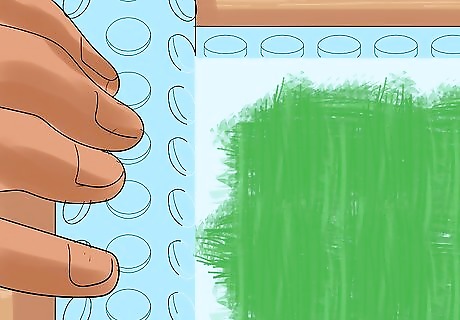
Roll up the bubble wrap tightly. Start by folding an inch (2.54 centimeters) of so of bubble wrap over the bottom edge of the felted wool to create a seam. Next, roll the wool up as tightly as you can along with the bubble wrap, starting from the bottom. Press down as you roll the wool to drain off any excess water.

Roll the bubble wrap tube across a flat surface for about five minutes. Roll it gently at first, then with increasing pressure later on. Don't over-felt or over-work your wool.
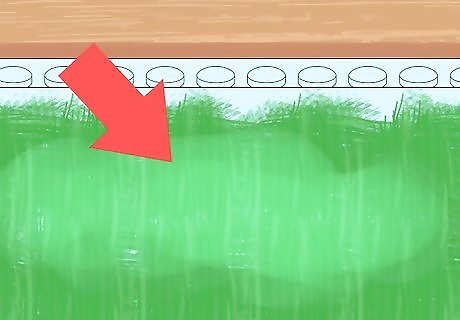
Rinse the sheet with cold water, then squeeze it to drain off the excess water. The cold water rinse will help set the fibers. Gently press down onto the felt sheet to squeeze out the excess water. Do not wring or twist it. Consider adding a splash of white vinegar to the water. This will remove excess soap and restore the natural pH of the wool; it will brighten the wool's colors and help it last longer.
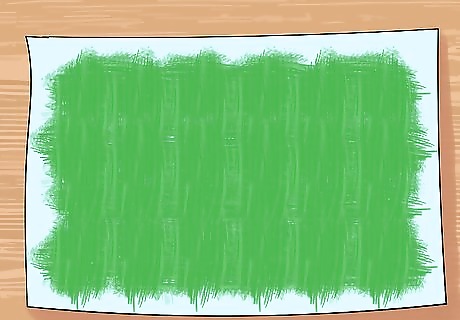
Lay the wool out some place flat to dry. The wool will have shrunk and thickened during the felting process. It may also shrink a little bit more while it dries. This is completely natural.
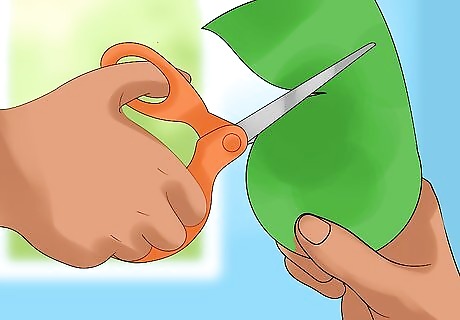
Use your felted wool. You can cut it into squares and sew it onto a bag to make patches. You can also cut it into circles to make coasters. The possibilities are endless!
Making Felt Balls

Pull apart some raw wool into tufts. Do not cut the tufts. If you cut them, you will get sharp edges that will be harder to felt. You can use natural, uncolored wool, or wool that has been dyed bright colors. The size of the tufts doesn't really matter, but a 4 to 5-inch long (10 to 12 centimeters) tuft will give you a bead about the size of a cherry.
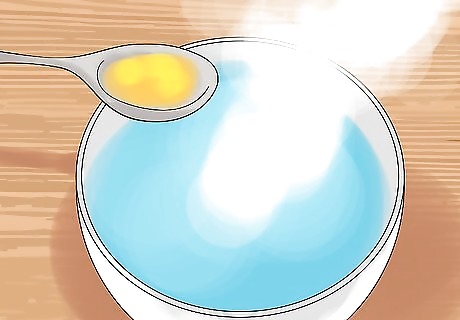
Fill a small tub with hot water and add some liquid dish soap into it. You will need 2 tablespoons of dish soap for every 3 cups (700 milliliters) of water. Gently swish the water to mix, but not so much to create suds. The hotter the water, the faster the wool will felt. The water shouldn't be so hot that you can't handle it, however.
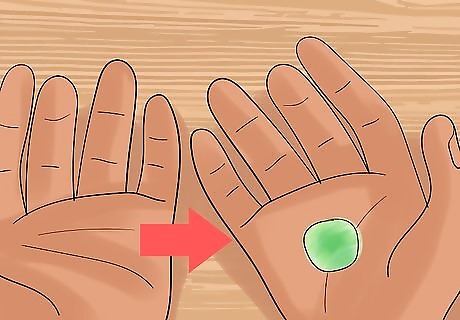
Gather a few tufts into a ball, then roll them between your palms. Don't worry about forming a firm ball just yet. You can use all one color of wool, or several different colors for a more interesting felt ball.
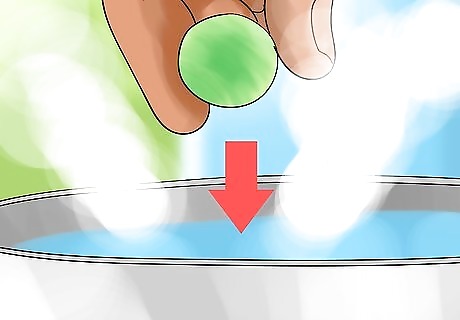
Soak the ball in the hot, soapy water. Hold the ball between your fingers, then dip it into the hot, soapy water. Don't worry if the ball starts to lose its shape and sag. You will reshape it in the next step.
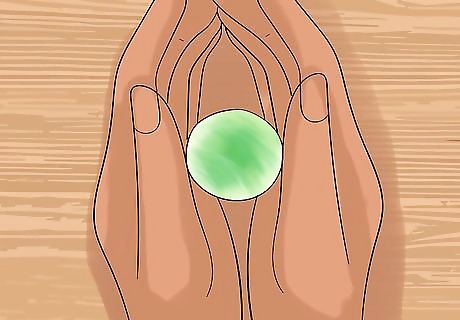
Roll the ball between your palms until it becomes firm. The ball will be loose at first, but then it will start to become more firm. This will take about 10 minutes. Be careful not to squeeze it too much. If you are making multiple beads, the water may cool down while you work. When that happens, replace the tub with more hot, soapy water.
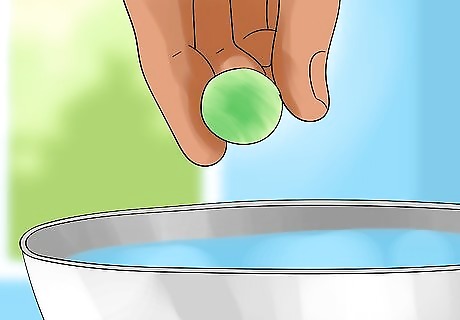
When the wool is firm, rinse it off with cold water. This will get rid of the soap and help set the fibers. If you'd like, you can then soak it in some water with a splash of white vinegar in it. This will help remove the rest of the soap and brighten the wool's color.

Gently press the ball in a towel to remove excess water. Be careful not to squeeze too hard, of you may distort the ball.

Allow the felt ball to air dry. This will take about 24 hours. Remember, just because the ball is dry on the outside does not necessarily mean that it is dry on the inside.
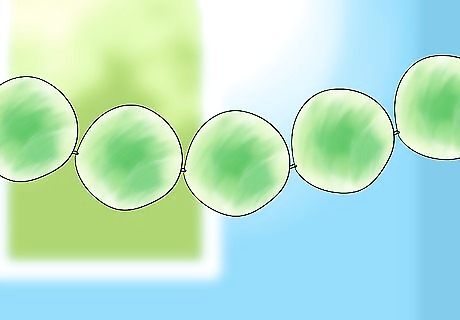
Consider threading the balls onto some twine to make a garland. Poke a hole through each ball using a darning needle, and pull some heavy thread through it. You may need to use needle nose pliers to help pull the needle through, especially of the felt balls are firm. Hang the garland wherever you like when you are done.











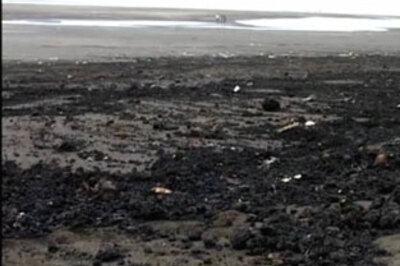






Comments
0 comment